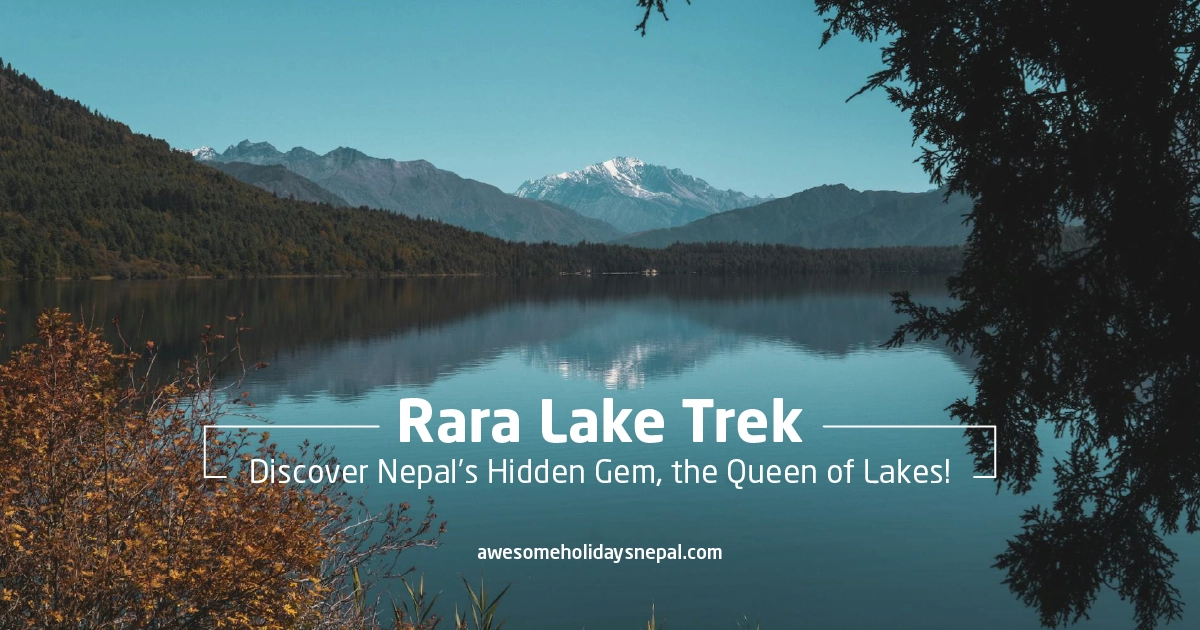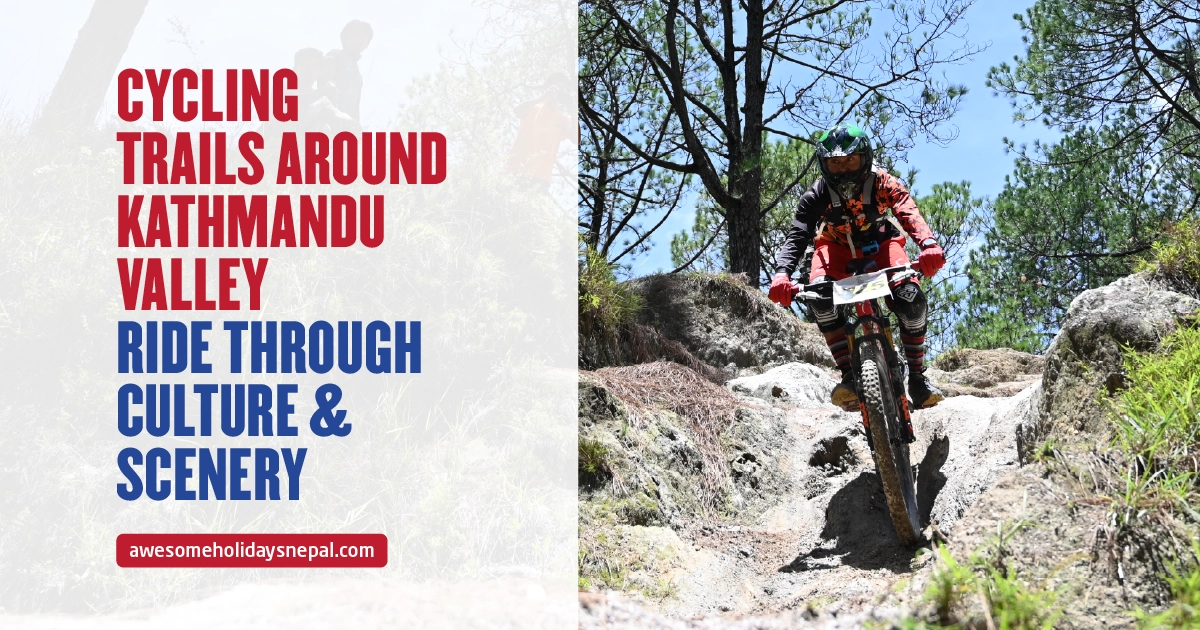Kala Patthar: The Ultimate Everest Viewpoint
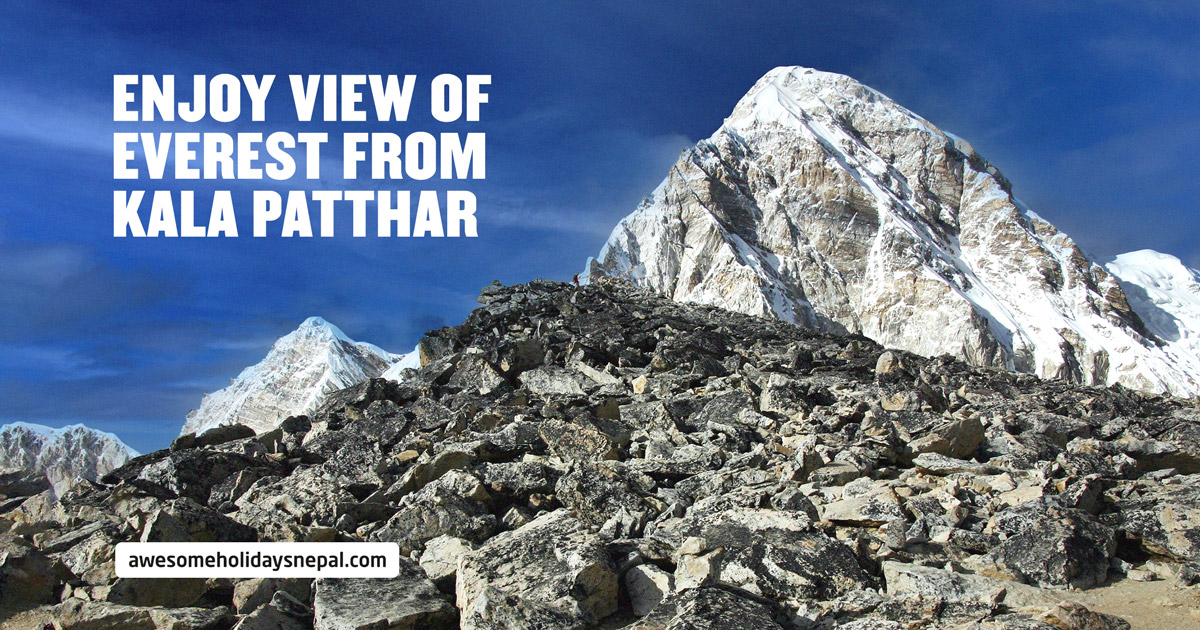
Nestled in the heart of the Everest region, Kala Patthar is one of Nepal’s most sought-after trekking destinations. Offering an unparalleled view of Mount Everest (8,848.86m), Kala Patthar is the highest point trekkers can reach on the Everest Base Camp (EBC) Trek without an additional climbing permit.
Unlike the Everest Base Camp, which does not provide a clear view of Everest’s summit, Kalapathar is the perfect spot for breathtaking sunrise and sunset panoramas of the world’s tallest peak.
Where is Kala Patthar located?
Kalapathar is the highest viewpoint at 5,545 meters (18,192 feet) above sea level. It is situated in the Khumbu region of Nepal, the final stop before reaching Everest Base Camp. It is located on the south ridge of Pumori in the Khumbu region above Gorakshep.
The geographic coordinates of Kala Patthar are 27°59′14″N 86°49′35″E. Kala Patthar is the rocky ridge of the Sagarmatha National Park, a UNESCO World Heritage Site known for its rugged terrain, glaciers, and diverse Himalayan flora and fauna.
Why does Kalapathar look Kala (black)?
Kala Patthar appears black because it is composed primarily of dark-colored metamorphic rocks, such as schist and gneiss, which do not reflect much light. Such rocks are generally found in the high mountains.

The literal Nepali meaning of Kala Patthar is Black rock (Kala = black, Patthar = rock) due to the dark texture of the rocks found there. Kala Patthar is technically not an actual mountain, but it is one of the popular spots on the EBC route.
The Trek to Kala Patthar: A Journey of a Lifetime
The journey to Kala Patthar is an extension of the 14-day Everest Base Camp Trek, which usually follows the route from Lukla to EBC and Kalapathar. The trek to Kala Patthar follows the Dudh Koshi River, passing through Sherpa villages, Buddhist monasteries, and mountain landscapes.
The Khumbu region is the home to Sherpas that have been living there for centuries and are known for their Tibetan-influenced Buddhist culture. Tengboche, Dingboche, and Pangboche are some of the historical monasteries of the region, which are places of devotion and faith for the people.
Similarly, the Mani Rimdu Festival is a major Buddhist celebration in the region celebrated annually for 19 days in villages like Tengboche, Dingboche, and Pangboche.
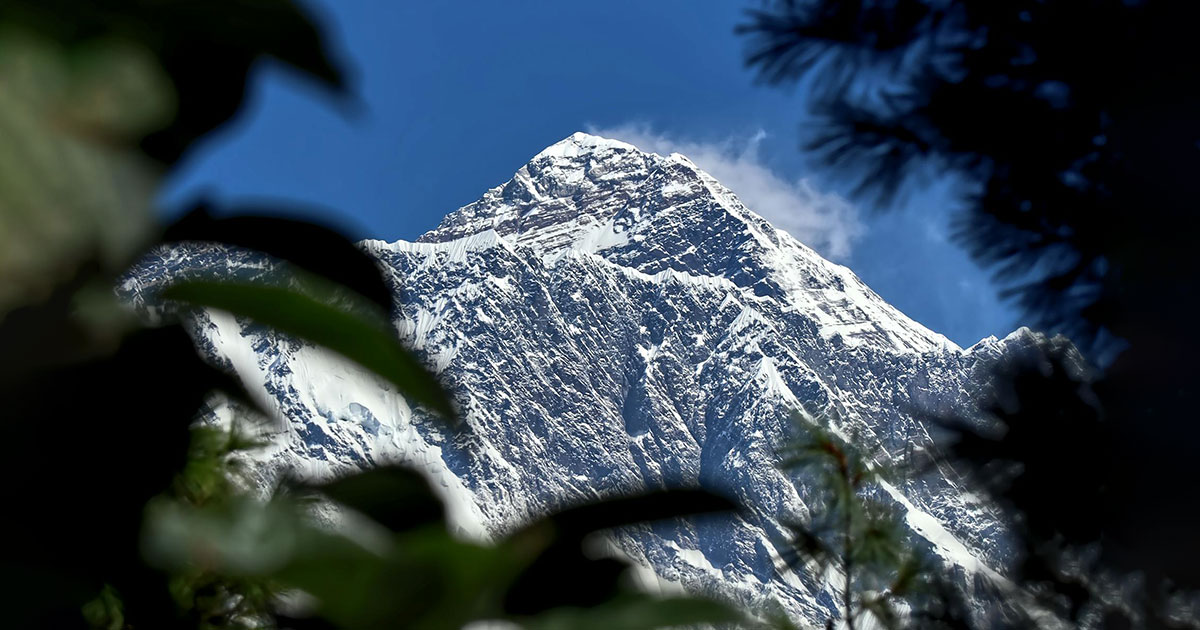
Climate and Best Seasons to Visit
Kala Patthar and Everest Base Camp have extreme Himalayan weather conditions. These places can be visited all round the year. Yet the best seasons to visit Kalapathar are:
- Spring (March to May): Spring has moderate temperatures, clear skies, and blooming rhododendrons, which are perfect for trekking in the Everest region.
- Autumn (September to November): Another suitable season with stable weather and crystal-clear mountain views.
- Winter (December to February): The weather is usually harshly cold, but it offers stunning snowy landscapes. This season is preferred only by some experienced nomads.
- Monsoon (June to August): The heavy rain and cloudy conditions make trekking challenging.
Wildlife and Habitat Around Kala Patthar
Despite the extreme climate, the Everest region is home to diverse Himalayan wildlife. Some exotic animals of the region, including snow leopards, Himalayan thar, Musk deer, blue sheep, Nepal’s national bird—the colorful Danphe (pheasant)—and even elusive snow leopards, are found in this region.
Sagarmatha National Park protects the fragile ecosystem that protects the flora and fauna of the region.
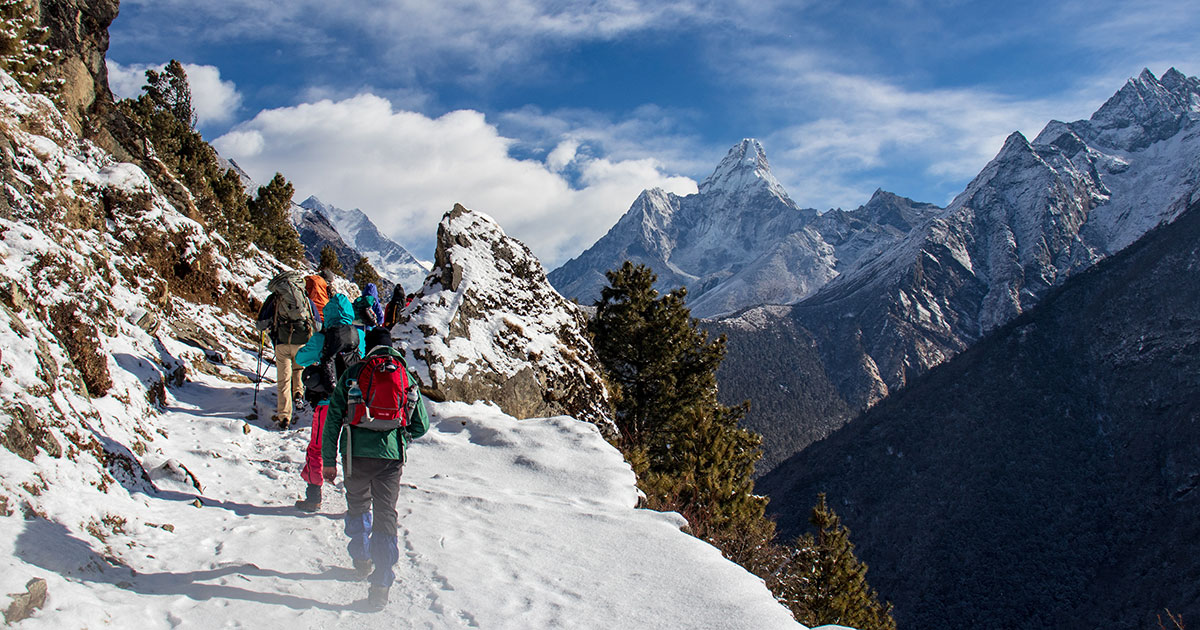
Restrictions, Permits, and Guidelines for Trekking
It is a must to hire a licensed trekking guide for a safe and enriching experience. Besides, the trekkers must get the following to trek in the Khumbu region:
- Sagarmatha National Park Entry Permit – NPR 3,000 (USD 25)
- Khumbu Rural Municipality Permit – NPR 2,000 (USD 15)
- TIMS (Trekker’s Information Management System) Card (for solo trekkers).
But an additional permit is not required for the trek to Kalapathar.
Why is Kala Patthar the Best Viewpoint for Everest
Although Everest Base Camp is the major attraction for trekkers, most trekkers are surprised to learn that Everest’s summit is not visible from the base camp due to the obstruction of Nuptse. However, from Kala Patthar, trekkers get an unobstructed view of Everest, Nuptse, Lhotse, Pumori, Thamserku, Kangtega, Taboche, Lobuche, and Ama Dablam.
The sunrise and sunset views from Kala Patthar are considered among the most breathtaking in the Himalayas. Here is a brief on the other best sunrises in Nepal. Kalapatthar is also a legitimate vantage point for photographers and adventurers alike.
How Difficult is it to trek to Kala Patthar?
The Everest Base Camp and Kala Patthar Trek is considered moderately difficult due to its high altitude and demanding trails. The biggest challenges associated with trekking to EBC and Kalapathar are the reduced oxygen levels and harsh cold temperatures, especially in winter.
The trek to Kala Patthar is a 2-hour ascent from Gorakshep that is generally done early in the morning to catch the golden rays of the morning. The morning and evening are preferred for this trek to get the astonishing view of the mountains.
The decreasing air in mountainous regions causes various issues like acute mountain sickness (AMS). Rugged terrain, unpredictable snowfall, cold, and strong wind make the trekking to Kalapathar extremely difficult. Proper acclimatization and slow ascent are crucial for a safe and enjoyable trek.
Trekking tips to travel to Kala Patthar
Properly managed acclimatization is the best precaution to trek safely to prevent Acute Mountain Sickness (AMS). Trekking in high altitude (5,545m) requires slow hiking and proper hydration. One must follow some safety measures during trekking in the high mountains. Here are some important Health and Safety Tips for Trekking in Nepal.
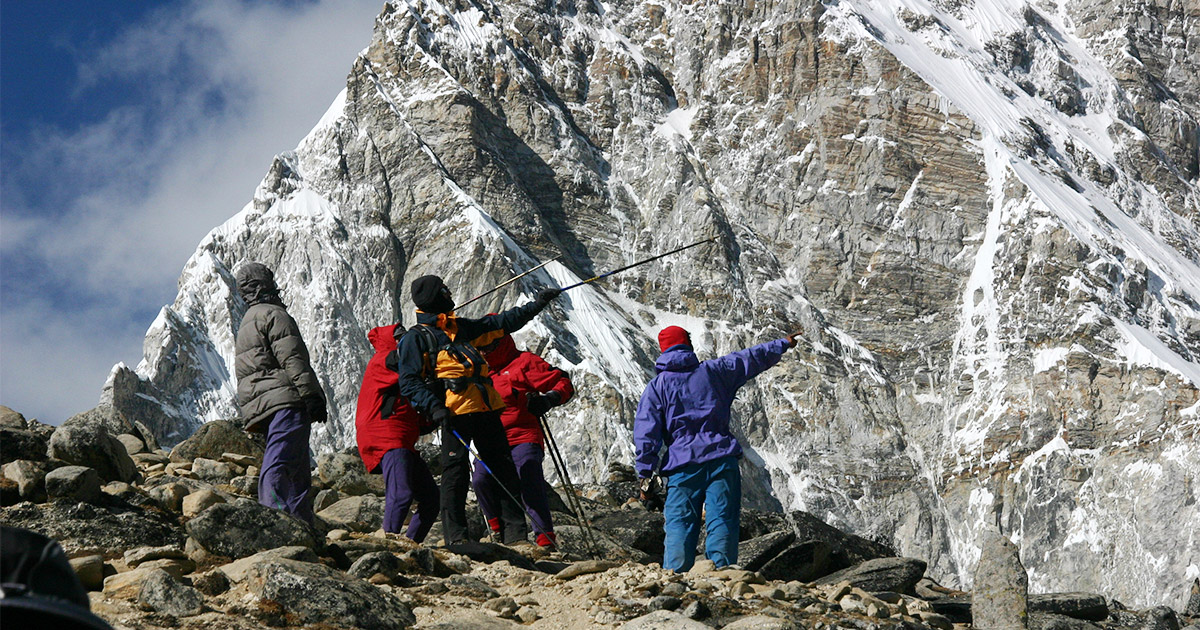
Essential Packing List for Kalapathar Trek
Packing light is not just a skill but also an art to enjoy during your trekking in high altitude. Packing smartly can save your energy and provide you enough time to enjoy your trekking rather than feeling the burden of heavy weight on your shoulders. Here, we have a traveler’s guide for packing your bag for trekking.
The Impact of Climate Change on Kala Patthar and Everest Region
Global warming has significantly affected Everest Base Camp and Kala Patthar. Melting glaciers, unpredictable weather patterns, and glacial lake outbursts are some of the serious concerns. The retreat of the Khumbu Glacier has already forced EBC to be relocated higher. Sustainable trekking practices are necessary to mitigate further environmental degradation.
Scientific and Environmental Importance
Kala Patthar is not just a trekking hotspot—it also plays a crucial role in scientific research and climate studies. On December 9, 2009, the Nepali cabinet held a historic meeting at Kala Patthar to raise awareness of climate change’s impact on Himalayan glaciers, just before the Copenhagen Climate Summit.
Additionally, the Mount Everest Webcam (EWC) was installed here at an altitude of 5,675 meters by the EVK2Minoprio Organization during COP27 in 2022. This project aims to monitor glacial evolution, water systems, human health, vegetation, fauna, and seismic activity in the Everest region.
Conclusion: A Must-Visit Destination for Adventure Enthusiasts
Kala Patthar is the ultimate Everest viewpoint, offering once-in-a-lifetime trekking experiences. Whether you are a nature lover, a photographer, or an adventure enthusiast, trekking to Kala Patthar will leave you with unforgettable memories of the grandeur of the Himalayas up close.
As climate change continues to impact the Himalayan region, responsible trekking and eco-friendly travel practices are essential to preserve this breathtaking landscape for future generations. Whether it’s the challenging ascent, breathtaking sunrise, unique cultural experiences, or scientific significance, Kala Patthar continues to captivate trekkers from around the world.
FAQs
Expand AllWhat is the elevation of Kala Patthar?
Kala Patthar stands at an impressive altitude of 5,545 meters (18,222 feet) above sea level. This high vantage point offers breathtaking panoramic views of Mount Everest, Lhotse, Nuptse, and the surrounding Himalayan peaks.
How long does it take to hike to Kalapatthar?
The trek from Gorakshep to Kala Patthar usually takes between 1 to 2 hours. However, the exact duration varies based on individual fitness levels, acclimatization days, and prevailing weather conditions.
Is the hike to Kala Patthar difficult?
Yes, the trek is challenging due to the high altitude and steep incline. However, trekkers with moderate fitness levels and proper acclimatization can successfully reach the summit.
What is the best time to hike Kalapatthar?
The most favorable seasons for trekking to Kala Patthar are spring (March to May) and autumn (September to November). These periods generally offer clear skies, stable weather, and excellent visibility.
Do I need a permit to visit Kalapatthar?
A special permit is not required to hike Kala Patthar. However, trekkers must obtain a Sagarmatha National Park permit and a Khumbu Municipality permit before embarking on the journey.
What kind of view can I expect from Kalapatthar?
Kalapatthar provides one of the most breathtaking panoramic views in the Himalayas. The highlight is the unobstructed sight of Mount Everest, along with Lhotse, Nuptse, Pumori, and other towering peaks. The sunrise from Kalapatthar is particularly famous for its golden hues over Everest.
Can I trek to Kalapatthar without visiting Everest Base Camp?
Yes, it is possible to hike to Kalapatthar without going to Everest Base Camp. Since the two destinations are nearby, most trekkers choose to visit both, but it is not mandatory.
What should I pack for the Kalapatthar trek?
Essential trekking gear includes:
- Layered warm clothing (thermal wear, fleece, down jacket)
- Sturdy hiking boots
- Gloves, hats, sunglasses, and sunscreen
- Trekking poles for better support
- Water bottle and high-energy snacks
- Personal medications and essential trekking permits
Are there accommodations near Kalapatthar?
Yes, Gorakshep is the nearest settlement to Kalapatthar, offering basic lodges and teahouses. Due to limited availability, it’s advisable to book accommodations in advance, especially during peak trekking seasons.
How can I book a Kalapatthar trek?
Trekkers can arrange their trip in two ways:
- Through a trekking agency like Awesome Holidays Nepal, we manage permits, accommodations, guides, and porters for a hassle-free experience.
- Independent trekking – Requires thorough planning, including securing permits, booking lodges, and carrying essential gear.
Is it possible to hike to Kalapatthar during winter?
Yes, trekking in winter (December to February) is possible, but be prepared for extreme cold, heavy snowfall, and harsh conditions. Proper gear and prior experience are essential.
How many days does it take to complete the Kalapatthar trek?
A standard round-trip trek from Lukla to Kalapatthar and back typically takes 10 to 12 days, including acclimatization days.
Related blog posts
Discover a choice of tourist destinations loved by most of our visitors. Whether you're on a jungle safari to spot rare animals or walking through a world heritage site, these well-planned itineraries cover the major highlights of Nepal.


